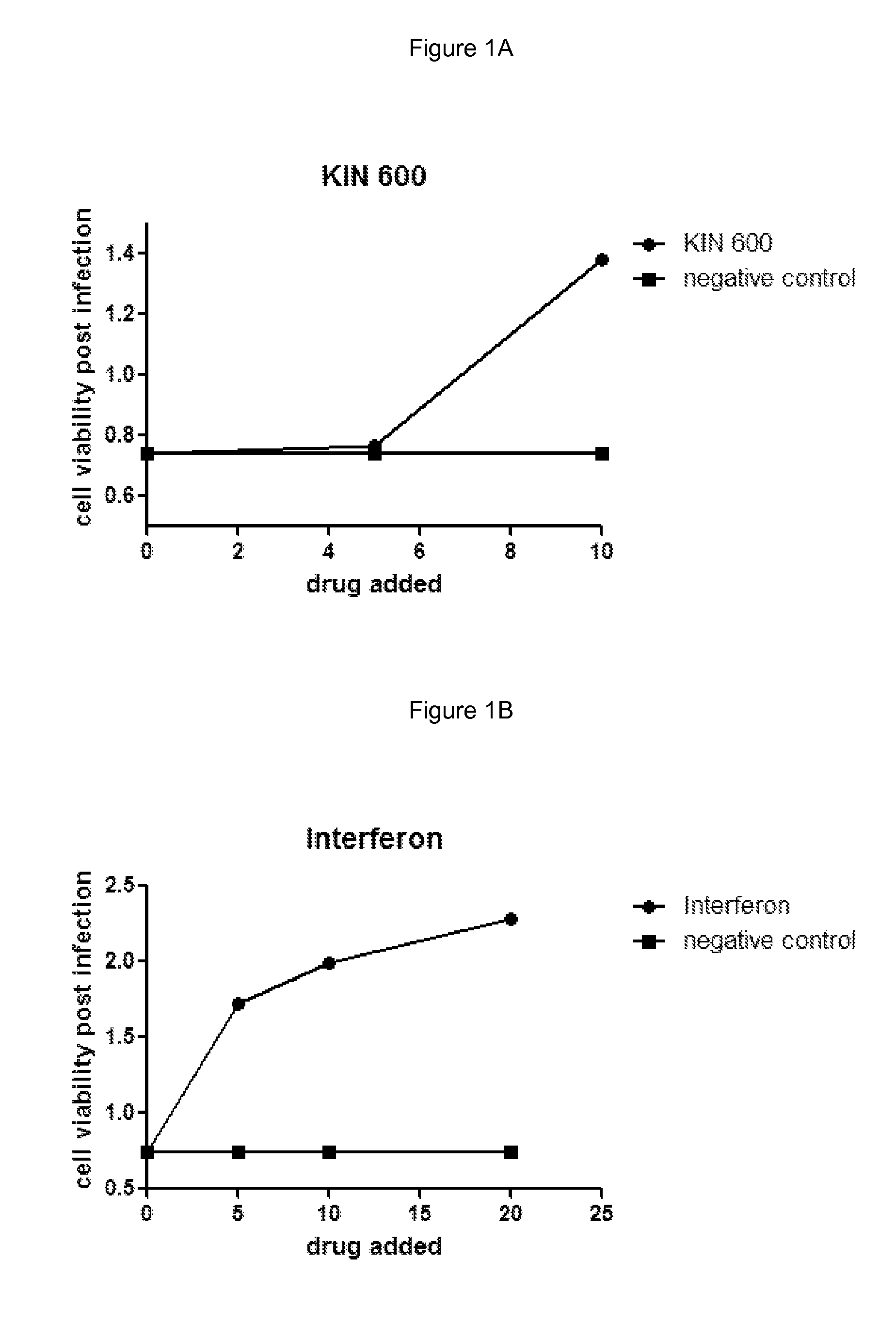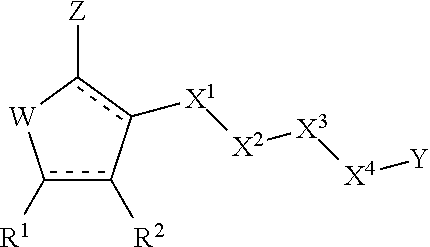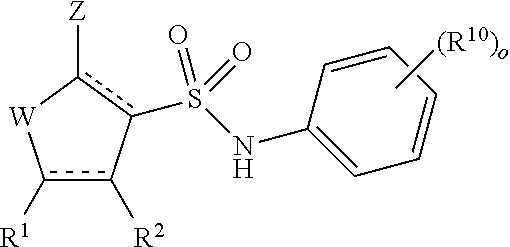Sulfonamide anti-viral compounds
a technology of sulfonamide and antiviral drugs, applied in the field of sulfonamide antiviral drugs, can solve the problems of limited antiviral drugs, poor antiviral effects, and enormous public health problems of rna viruses, and achieve the effects of less susceptible, less side effects, and enhanced host innate antiviral respons
- Summary
- Abstract
- Description
- Claims
- Application Information
AI Technical Summary
Benefits of technology
Problems solved by technology
Method used
Image
Examples
example 1
Characterization and Antiviral Activity of KIN600
[0141]KIN600 compounds are assayed for antiviral properties against RNA viruses in cell culture, including Hepatitis C virus and Influenza A virus. KIN600 showed antiviral activity in the HCV IF antiviral assays, and no significant cytotoxicity. These and other assays are performed as described below.
[0142]MTS assay to determine cytotoxicity. Cultured human Huh7 cells are treated with increasing amounts of KIN600 or equivalent amounts of DMSO diluted in media for 24 hours to see their effect on cell viability. The proportion of viable cells is calculated using a cell viability assay that measures conversion of a tetrazolium compound [3-(4,5-dimethyl-2-yl)-5-(3-carboxymethoxyphenyl)-2-(4-sulfophenyl)-2H-tetrazolium, inner salt; MTS] to a colored formazan compound in live cells.
[0143]The conversion of MTS to formazan is detected in a 96-well microtiter plate reader, and the resulting optical densities can be plotted directly to estimate...
example 2
EMCV Antiviral Assay
[0154]Huh7 cells were grown under normal growth conditions and treated with the indicated amount of drug in media containing 0.5% DMSO. The cells were grown in the presence of drug for 5 hours and then infected with 250 pfu Murine Encephalomyocarditis virus (EMCV) for example obtained from ATCC #VR-129B. Infected cells were grown for an additional 18 hours and then cell viability was measured using an MTS assay. Negative control cells were treated with buffer alone containing 0.5% DMSO. Interferon treatment was used as a positive control for virus inhibition and was added similar to drug treatments at a final concentration of 10 IU / mL for example Interferon-α: Intron A, from Schering-Plough. Cell viability was measured using an MTS assay such as; CellTiter 96® AQueous One Solution Cell Proliferation Assay (MTS), from Promega #G3580.
[0155]Results are shown in FIGS. 1A and 1B and are as described below:
[0156]
Addition (drug or control)Cell viability post-infectionNe...
example 3
Antiviral Activity and Pharmacological Properties Using Quantitative Structure-Activity Relationship (QSAR) Studies
[0157]This Example describes optimization of KIN600 compounds for antiviral action. For optimization, a two-stage QSAR approach is used; starting with a small analog derivative set to define structural class followed by derivative expansion. Active analogs identified in the first stage will be used to define a subset of structural classes of interest for further optimization in stage 2.
[0158]Stage 2 will focus on creating structural diversity and evaluating core variants. Structural derivatives will be tested for biological activity in antiviral activity against HCV and influenza virus, and cytotoxicity in one or more cell lines or peripheral blood mononuclear cells. Optimized molecules that show improved efficacy and low cytotoxicity will be further characterized by additional measures of in vitro toxicology and absorption, distribution, metabolism, and elimination (AD...
PUM
| Property | Measurement | Unit |
|---|---|---|
| time | aaaaa | aaaaa |
| structure | aaaaa | aaaaa |
| viral resistance | aaaaa | aaaaa |
Abstract
Description
Claims
Application Information
 Login to View More
Login to View More - R&D
- Intellectual Property
- Life Sciences
- Materials
- Tech Scout
- Unparalleled Data Quality
- Higher Quality Content
- 60% Fewer Hallucinations
Browse by: Latest US Patents, China's latest patents, Technical Efficacy Thesaurus, Application Domain, Technology Topic, Popular Technical Reports.
© 2025 PatSnap. All rights reserved.Legal|Privacy policy|Modern Slavery Act Transparency Statement|Sitemap|About US| Contact US: help@patsnap.com



